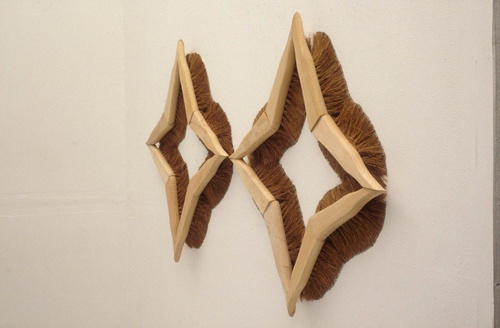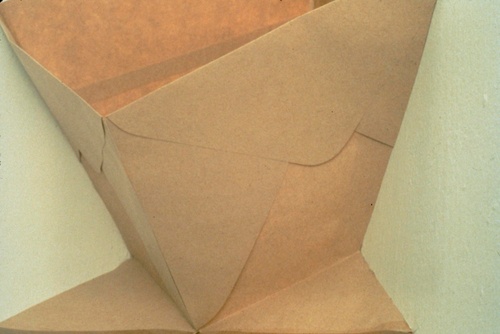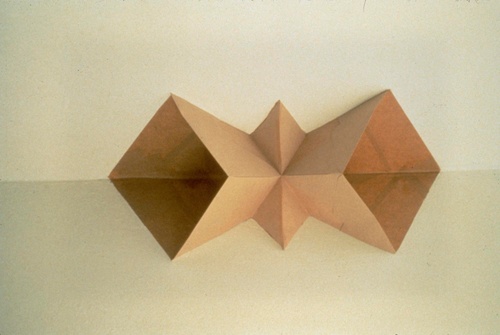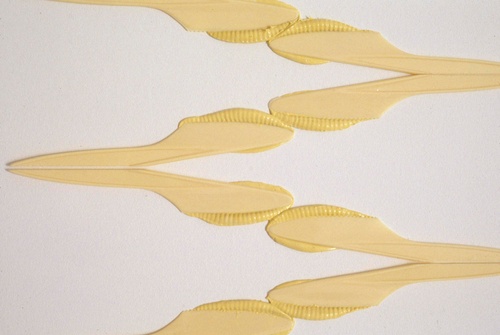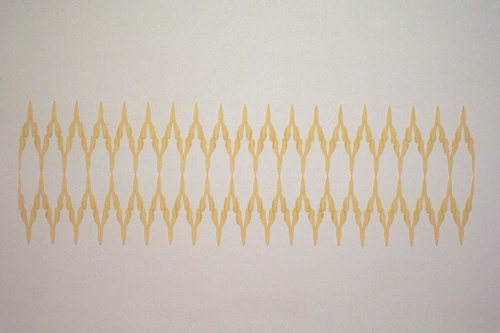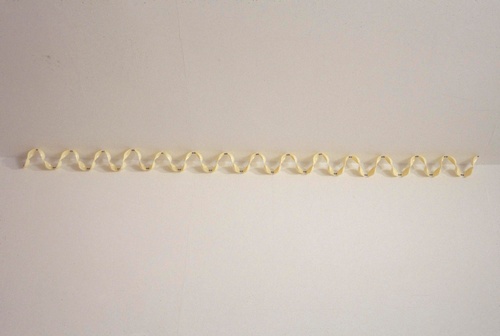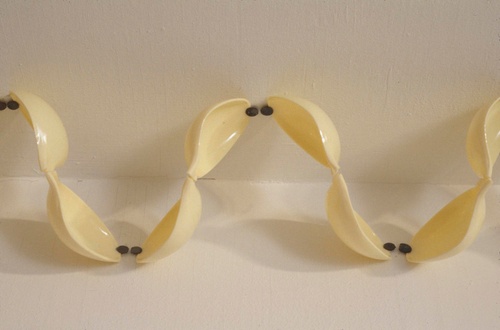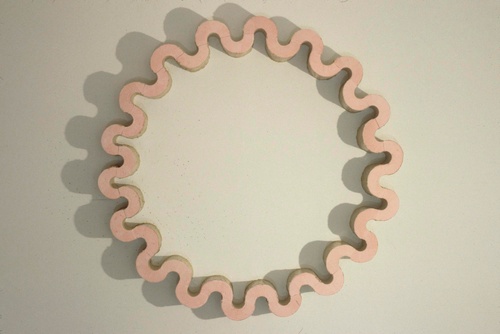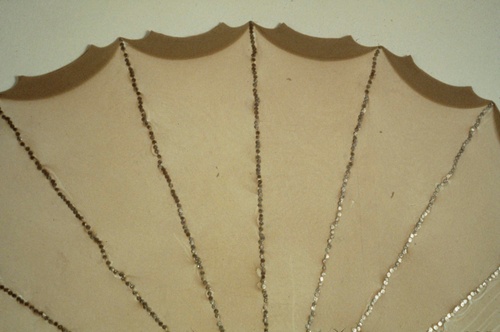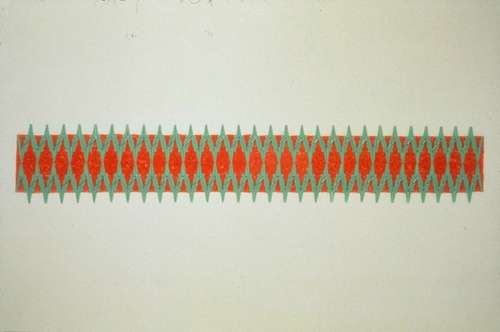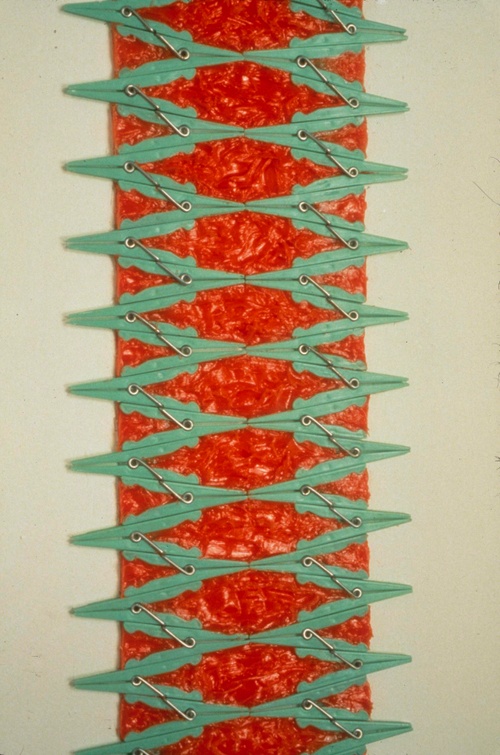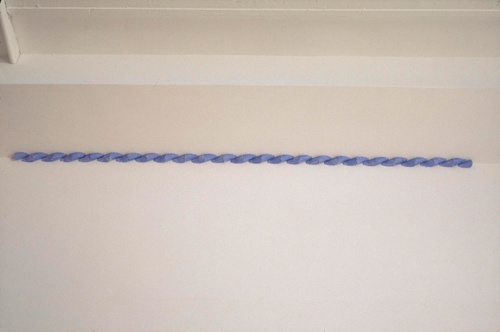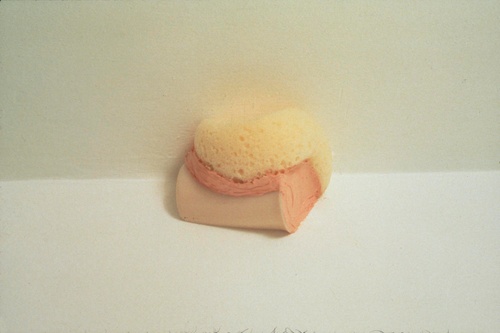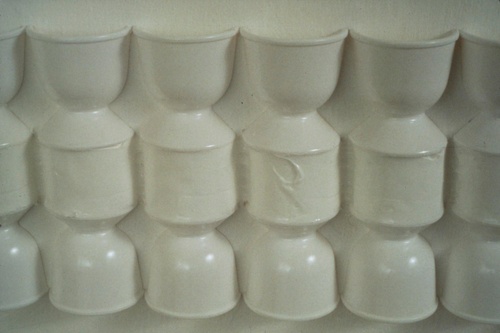Ana Prada
Ana Prada
Exhibitions
Ana Prada
October 8 1998 – January 3 1999
Seen from a distance, the works of Ana Prada resemble abstract minimalist paintings. Basic geometric shapes and bright colors form distinct patterns on the wall, punctuated by painterly textures and the physicality of low relief. On closer examination, however, the works reveal themselves to be intricately constructed, site-specific sculptures which cannot be removed without being destroyed. In the tension between the conventions of painting and the disposable nature of the raw materials used to make the pieces, Prada’s work reflects a distinctively hybrid approach that links traditional studio practices with innovative installation techniques. Prada has achieved an art that is halfway between object and incident.
Born in Zamora, Spain, in 1965, Ana Prada is one of a number of young Spanish sculptors who emerged in the 1990s. Her early process-based sculptures transformed fragments of everyday objects into ambiguous shapes that seemed to contradict their origins. A characteristic early work, Columna Infinita (“Endless Column,” 1991), incorporated the seams of seven white plastic bags into the architecture of the exhibition space by the use of vertical lengths of brown packing tape which hold the plastic fragments in place while lending them an unexpected spatial presence. In 1994, Prada started working with mass-produced objects such as plastic knives, clothespins, hair curlers, and nylon stockings. Arranging multiples of up to a dozen or more such objects into repetitive sequences, she secured them to the wall by nailing, stapling, or by using a colored silicon adhesive, which became an integral part of the finished work. Though the highly labor-intensive procedure involved is readily apparent – requiring several days for the installation of a single piece – it is subsumed by the delicate nature and masterful presence of the work.
For this New Museum exhibition – the artist’s first in the United States – Prada has re-created four sculptures from the period 1994-1997: Blue Plait (1994), Untitled (1995), Succulent Flower (1994), and Curly Bit (1997). Her use of everyday, disposable materials to make a painterly statement in situ is the key to the pieces’ unique status as works of art. Like many contemporary artists who address philosophical issues through the medium of perception, Prada has shown through her labor-intensive yet understated work that even minuscule shifts in visual meaning can provoke the viewer to experience the material trappings of daily life from an entirely new perspective.
Born in Zamora, Spain, in 1965, Ana Prada is one of a number of young Spanish sculptors who emerged in the 1990s. Her early process-based sculptures transformed fragments of everyday objects into ambiguous shapes that seemed to contradict their origins. A characteristic early work, Columna Infinita (“Endless Column,” 1991), incorporated the seams of seven white plastic bags into the architecture of the exhibition space by the use of vertical lengths of brown packing tape which hold the plastic fragments in place while lending them an unexpected spatial presence. In 1994, Prada started working with mass-produced objects such as plastic knives, clothespins, hair curlers, and nylon stockings. Arranging multiples of up to a dozen or more such objects into repetitive sequences, she secured them to the wall by nailing, stapling, or by using a colored silicon adhesive, which became an integral part of the finished work. Though the highly labor-intensive procedure involved is readily apparent – requiring several days for the installation of a single piece – it is subsumed by the delicate nature and masterful presence of the work.
For this New Museum exhibition – the artist’s first in the United States – Prada has re-created four sculptures from the period 1994-1997: Blue Plait (1994), Untitled (1995), Succulent Flower (1994), and Curly Bit (1997). Her use of everyday, disposable materials to make a painterly statement in situ is the key to the pieces’ unique status as works of art. Like many contemporary artists who address philosophical issues through the medium of perception, Prada has shown through her labor-intensive yet understated work that even minuscule shifts in visual meaning can provoke the viewer to experience the material trappings of daily life from an entirely new perspective.
October 8 1998 – January 3 1999
